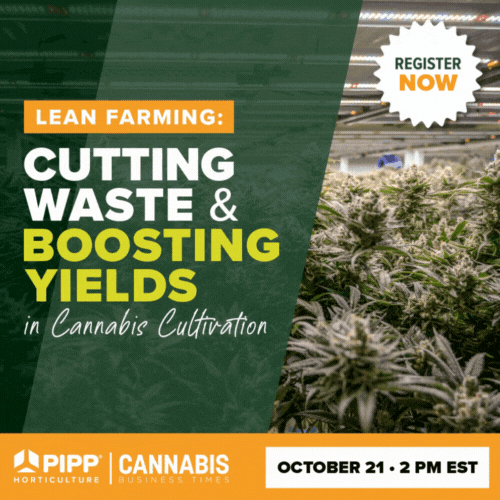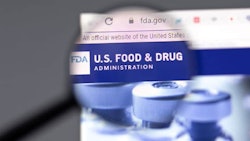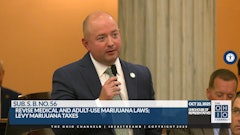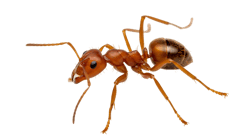
To crack down on illegal cannabis operations in Oregon, the state’s legislature created and passed House Bill 3000, and Gov. Kate Brown signed it into law in July 2021.

The bill gives more enforcement power to the Oregon Liquor and Cannabis Commission (OLCC), the state’s cannabis regulatory agency, said Kim Stuck, founder and CEO of Allay Consulting.
“Now, they will be able to monitor some of these hemp farms and make sure that they're following the rules and that they're actually growing what they say they're growing, and they have the amount of plants that they say they're going to have, and they're in the areas that they say that they are, and that their potency level is where it's supposed to be,” Stuck said.
In late August, the Oregon Department of Agriculture (ODA) filed its new proposed hemp rules, which intertwine with the OLCC cannabis rules, and is seeking public comment on those by Oct. 22.
Building off of the bill, the proposed rules are largely intended to prevent growers from using hemp as a front for legacy cannabis operations, Stuck said. The rules also more closely align the state’s hemp program with the U.S. Department of Agriculture (USDA) rules and address additional issues, such as contamination.
Below are some of the proposed rule changes that Stuck discussed with Hemp Grower.
Detailed Lab Reports
The proposed rules state that, starting on Jan. 1, 2022, all Oregon testing laboratories must submit test results to the USDA with various information about the grower, lab and test, such as “Grower’s registration number,” “Business address of the grower,” “Harvest lot identifier” and “Whether it is a retest.”
While many labs already include this information on certificates of analysis, Stuck said these requirements would improve product tracking and tracing.
“What they're trying to do is, when someone is testing at a [certain] level—whether it's a contaminant or potency—they want to know right away where that farm is and who it is that farmed that,” said Stuck, who previously worked as cannabis and hemp specialist at the Denver Department of Public Health and Environment.
“When I was a regulator, if I went in and had to go, ‘OK, we've got to go to the lab; we’ve got to ask the lab who these guys are,' [and] if they didn't know who they were, then we would never know where that product originated,” she said. “Doing something like a recall or a disposal at that point would be virtually impossible.”
Sampling and Testing Requirements
In the next calendar year, the proposed ODA rules state, samples will no longer pass testing if they test between 0.3% and 0.35% total tetrahydrocannabinol (THC), as calculated using a state-provided formula. The THC content of samples will instead need to test at 0.3% or less, with testing measurements of uncertainty taken into account. “If the sample of the harvest lot passes THC testing under these rules, the harvest lot corresponding to the sample passes required THC testing,” the rules state.
The proposed rules align with federal laws and USDA rules, Stuck said. “A couple of states have tried to increase the percentage to like 1% or something like that, to cut down on the loss of crops because of going over that percentage,” she added. “But it hasn't really worked. [The USDA hasn’t] really approved any hemp plan that is more than the 0.3.”
Also beginning in 2022, growers would be able to arrange state-mandated samples up to 30 days prior to harvest, as opposed to the current 28 days.
Similar to the THC requirements, Stuck said the 30-day window lines up with USDA rules. “And if you can give the growers a little more time, that's always good,” she added. “I don't think it's going to hurt anybody to have a few more days added on.”
Corrective Action Plans
Under the proposed rules, the ODA may ask businesses that have committed a violation to submit a corrective action plan. Stuck said businesses should draft a Corrective and Preventive Action (CAPA) plan, which is a standard operating procedure (SOP) for addressing potency, pesticides, microbials and other contamination issues.
“I think [the regulators] want people to realize that they need a CAPA plan in place, and they want them to be ready for when that happens, because I guarantee, no matter what, in any manufacturing or any other kind of agricultural company, like in any other industry, you will have problems,” Stuck said. “You’re going to have a recall at some point, or you're going to have at least a disposal before [product] goes out the door, at some point. It's a matter of being ready for that.
“If you can write a good corrective action plan for the regulators, it's going to not only help everything go a lot more smoothly and quickly, but it really shows that your company knows what they're doing and they actually care about the consumers and their product. So, it's really good for your brand identity anyway.”
No Animals in Grow Sites
The proposed rules state: “Failing to maintain safe conditions may include allowing unrestrained animals on the grow site….”
Stuck said pets can sully a hemp plant, as growers focused on production of flower material can’t wash off hair or other contaminants. “This is their way of trying to cut down on contamination, because [with] animal hair and animals in general, if they're using the bathroom in the field or anything like that, there could be some major issues with E. coli and all kinds of stuff,” she said.
Thorough Recordkeeping
Under the proposed rules, growers will need to keep various records, such as of “The harvest lot, seed lot, and immature plant lot identifier as applicable” and “Grow site and production area identifiers.” They also must take photos or videos of any disposed hemp.
Additionally, licensees transporting hemp will need to carry a “copy of the invoice or bill of lading” and “a copy of the pre-harvest test results … and sampling documentation,” per the proposed rules.
The regulators are putting forth these rules, Stuck said, “because of the things that they've run into in the past, with people growing high-THC cannabis instead of hemp, and they don't know where those plants are going.”
Generally, Stuck said the proposed rules ask more of the state’s hemp farmers, but that she believes they help legitimize the industry.
“Any time that you have more testing and more documentation and you're following regulations that line up with more federal regulations, it just shows your credibility and really shows that the products that you're producing are safe for human consumption,” Stuck said.
She added: “I think that putting these kinds of things in place getting GMP [good manufacturing practices] certification and ISO [International Organization for Standardization] certification and those kinds of things just really help your company shine and help consumers feel a lot better about buying these kinds of products. There still is a lot of fear and bias against our industry, so the more legit that we can be, the better off we’re going to be in the long run.”
























